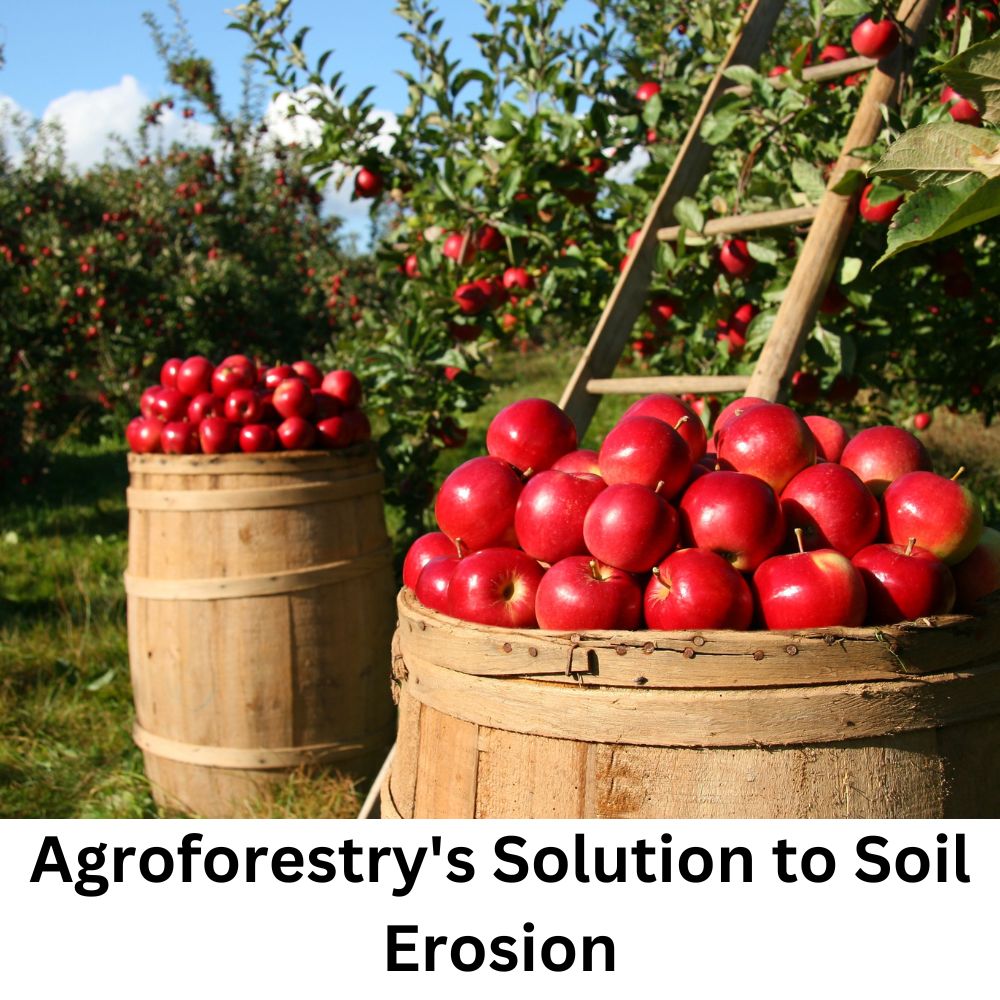Introduction
Soil erosion is a pressing global issue with far-reaching consequences for agriculture, ecosystems, and water quality. As agricultural practices intensify, the risk of soil erosion increases. Fortunately, agroforestry is a promising solution to bridge the gap between agricultural production and soil conservation. This article will delve into the significant problem of soil erosion, explore the causes and consequences, and discuss how agroforestry practices offer practical solutions to mitigate this environmental challenge.
Understanding Soil Erosion
Soil erosion is the process by which the top layer of soil is removed or transported by natural agents such as wind, water, or gravity. It is a natural phenomenon, but human activities, particularly unsustainable land management practices, have exacerbated erosion rates to alarming levels.
Causes of Soil Erosion
Overgrazing: Livestock overgrazing in pastures and rangelands leads to removing protective vegetation cover, making the soil vulnerable to erosion.
Deforestation: Clearing forests for agriculture or development exposes the soil to erosive forces, especially during heavy rainfall.
Unsustainable Agricultural Practices: Intensive farming methods, like monoculture and excessive tillage, disrupt the soil structure and leave it susceptible to erosion.
Urbanization: Construction and urban development increase impervious surfaces, leading to faster runoff and soil erosion.
Climate Change: Altered precipitation patterns and extreme weather events associated with climate change can intensify soil erosion.
Consequences of Soil Erosion
Soil erosion has far-reaching consequences for the environment, agriculture, and society:
Reduced Agricultural Productivity: Erosion depletes topsoil, which contains essential nutrients for plant growth. Reduced soil fertility can lead to lower crop yields and food insecurity.
Water Pollution: Eroded soil carries sediment and pollutants into water bodies, degrading water quality, harming aquatic ecosystems, and affecting human health.
Increased Flooding: Soil erosion contributes to increased runoff, which can result in more frequent and severe flooding events.
Habitat Destruction: Erosion can destroy habitats for both terrestrial and aquatic species, leading to biodiversity loss.
Economic Costs: Soil erosion results in financial losses for farmers due to reduced crop yields and increased costs associated with sediment control and water treatment.
Agroforestry as a Soil Erosion Solution
Agroforestry is a land management practice that integrates trees with crops or livestock. It offers a multifaceted approach to address soil erosion effectively:
Tree Canopy Protection
The canopy of trees in agroforestry systems provides a natural shield against erosive forces. Here’s how trees help:
a. Rainfall Interception: Trees intercept raindrops, reducing the velocity at which they hit the soil and preventing soil particle detachment.
b. Soil Binding: Tree roots stabilize soil and prevent erosion by binding soil particles together.
c. Windbreaks: Trees serve as windbreaks, reducing wind erosion by minimizing soil exposure to wind currents.
Improved Soil Structure
Agroforestry practices improve soil structure and fertility:
a. Organic Matter Accumulation: Leaf litter and organic matter from trees contribute to the buildup of soil organic carbon, enhancing soil structure and water retention.
b. Nutrient Cycling: Trees and their associated mycorrhizal fungi improve nutrient cycling, ensuring the availability of essential nutrients for plant growth.
Reduced Runoff
Agroforestry systems reduce surface runoff and its erosive power:
a. Canopy Cover: Trees intercept rainwater and reduce the impact of rainfall on the soil, minimizing runoff.
b. Enhanced Infiltration: Tree root systems enhance soil porosity, promoting water infiltration and reducing surface runoff.
Biodiversity and Ecosystem Services
Agroforestry promotes biodiversity, which plays a crucial role in soil conservation:
a. Habitat Creation: Trees in agroforestry systems provide habitat and food for various species, including beneficial insects that help control pests.
b. Erosion Buffer Zones: Agroforestry can establish riparian buffer zones along water bodies, reducing sediment transport into streams and rivers.
Climate Change Mitigation
Agroforestry contributes to climate change mitigation, which, in turn, can indirectly reduce erosion:
a. Carbon Sequestration: Trees in agroforestry systems sequester carbon dioxide from the atmosphere, helping mitigate climate change and reduce extreme weather events contributing to erosion.
b. Diversification: Agroforestry diversifies income streams for farmers, making them more resilient to climate-related challenges.
Case Studies: Agroforestry in Action
Alley Cropping in Sub-Saharan Africa: In regions like Mali and Niger, farmers have successfully implemented alley cropping systems, where rows of trees are planted alongside crops like maize or millet. These trees protect crops from wind and water erosion while providing valuable fruits, nuts, and wood products.
Riparian Buffer Zones in the United States: In the U.S., establishing riparian buffer zones, often consisting of trees and shrubs, along streams and rivers helps reduce soil erosion and water pollution. These buffer zones protect aquatic ecosystems and improve water quality.
Agroforestry in the Amazon Basin: Indigenous communities in the Amazon Basin practice agroforestry, combining tree species like Brazil nut and cocoa with traditional crops. This approach helps conserve rainforests, protect soil, and maintain biodiversity while generating income for local communities.
Conclusion
Soil erosion is a critical environmental issue with significant implications for agriculture, ecosystems, and water quality. Agroforestry offers a promising solution by addressing the root causes of erosion while providing multiple benefits, including improved soil health, reduced runoff, and enhanced biodiversity.
As we confront the challenges of a changing climate and the need for sustainable land management, agroforestry stands as a bridge between agriculture and conservation. By integrating trees with agricultural practices, we can mitigate soil erosion and promote ecological resilience, economic viability, and a greener future. Agroforestry is a testament to holistic land management’s power in bridging the gap between productivity and sustainability.
